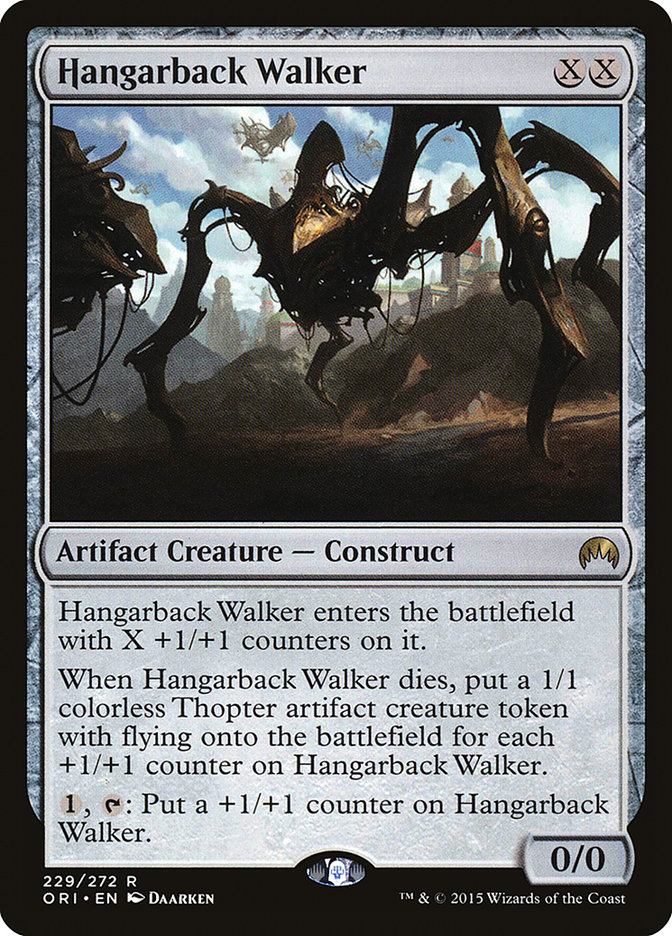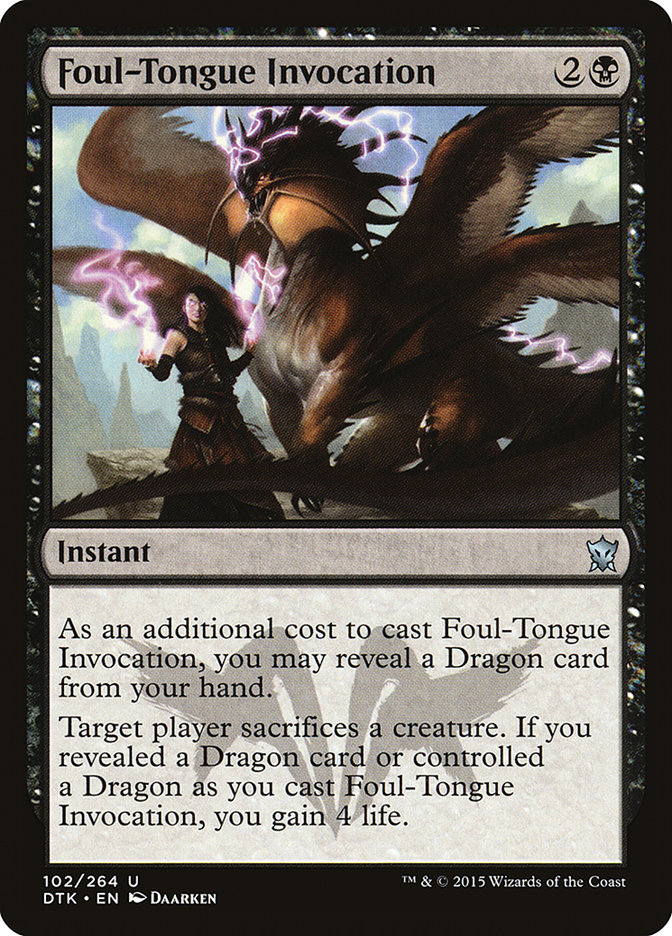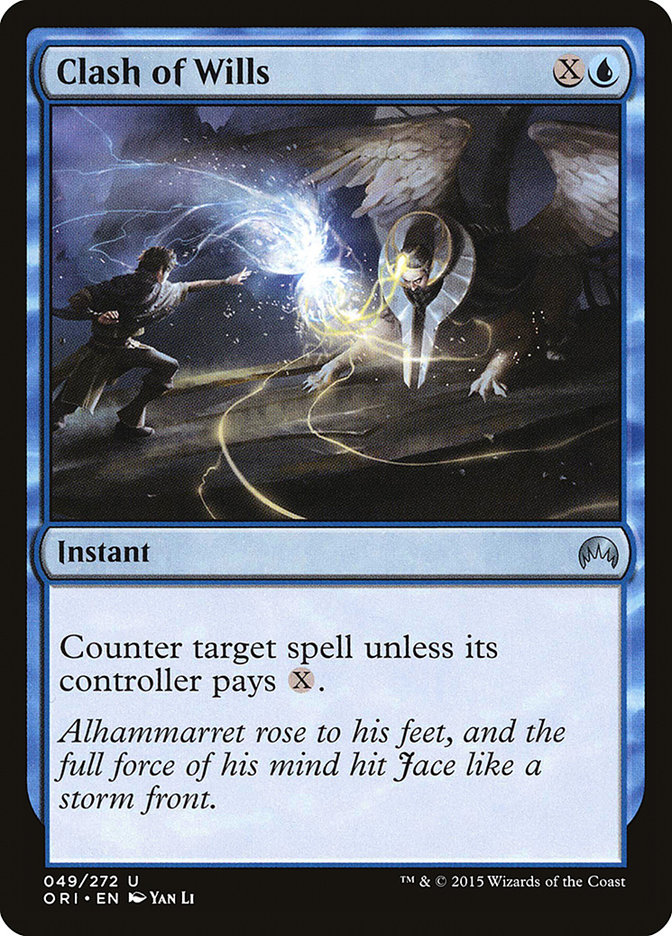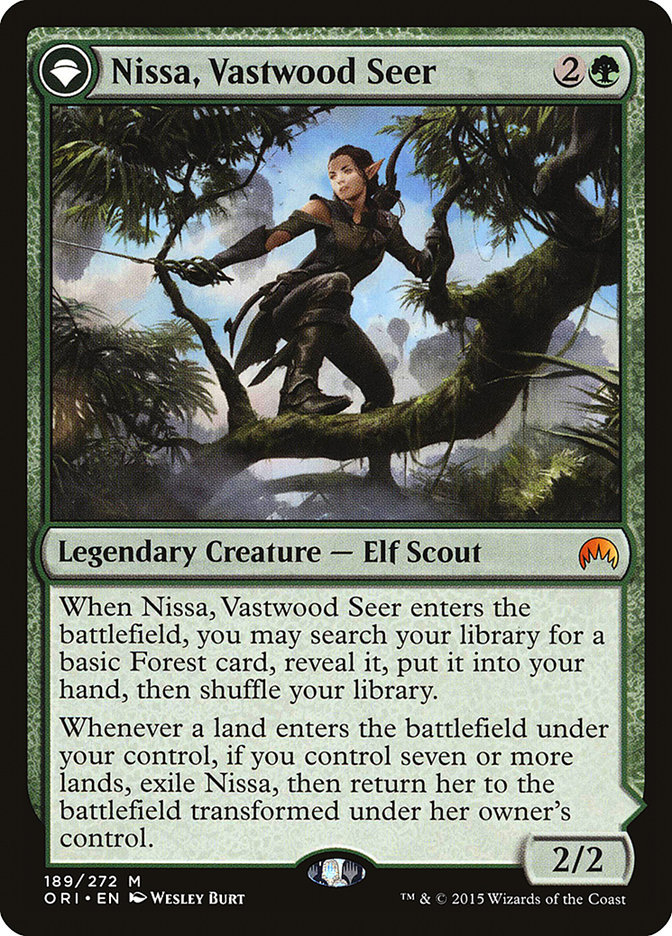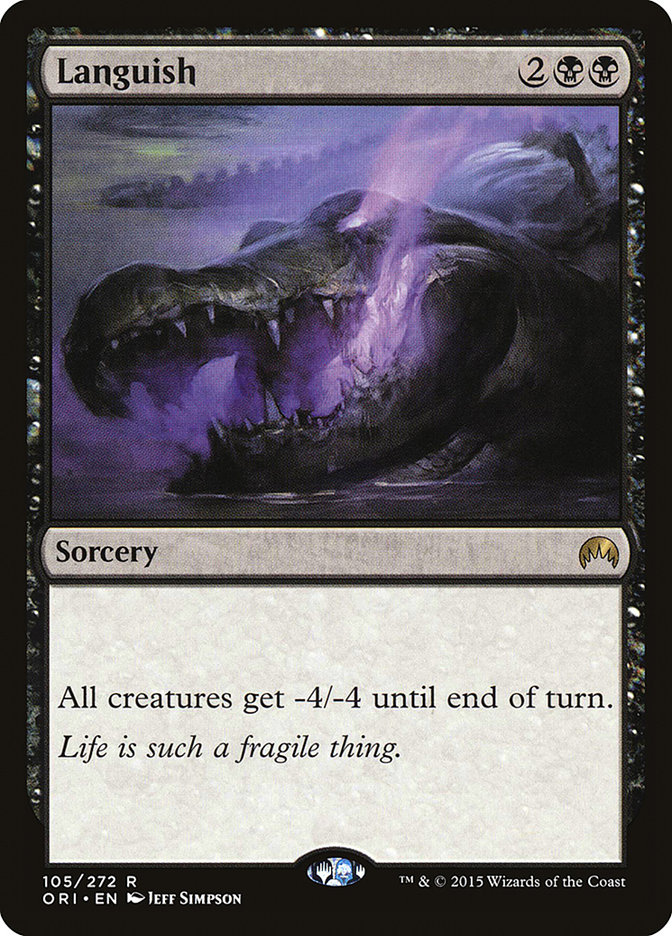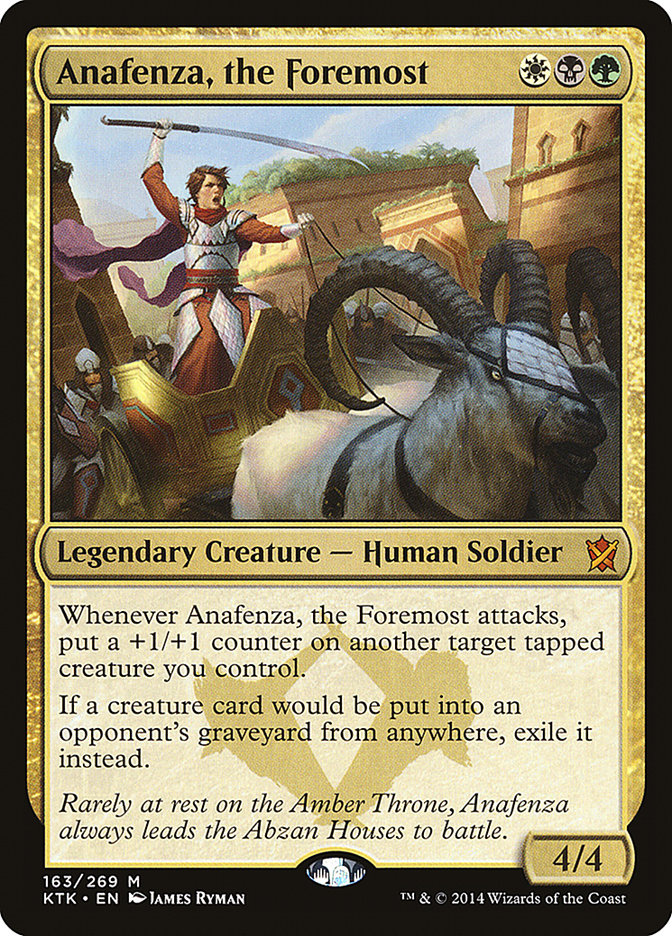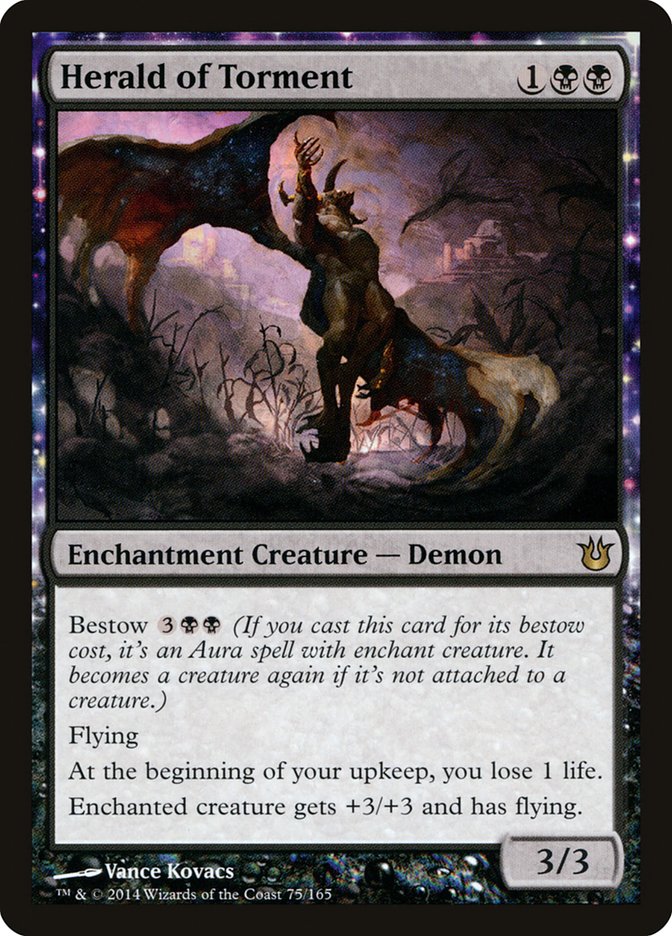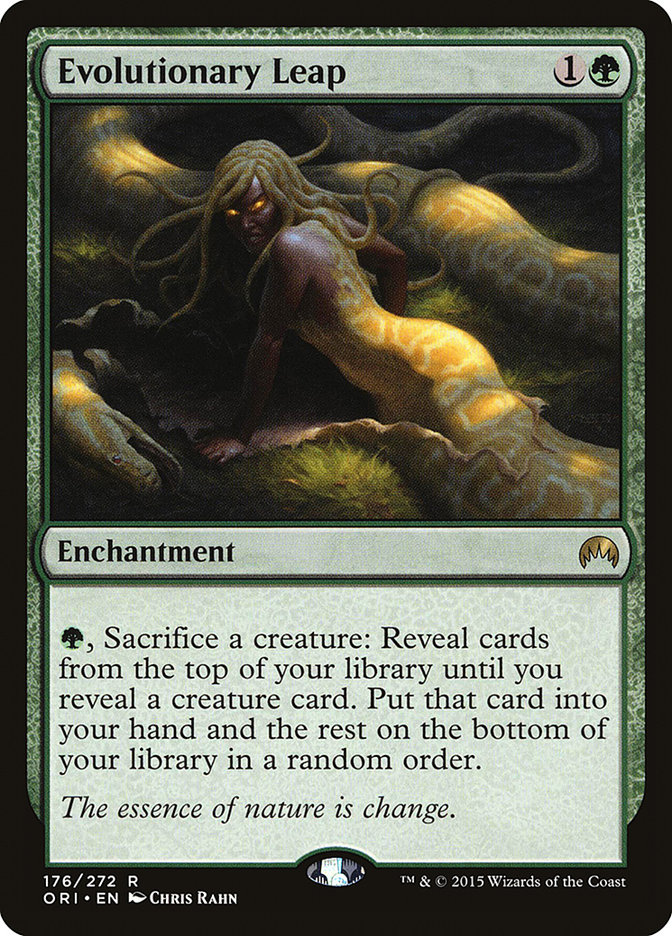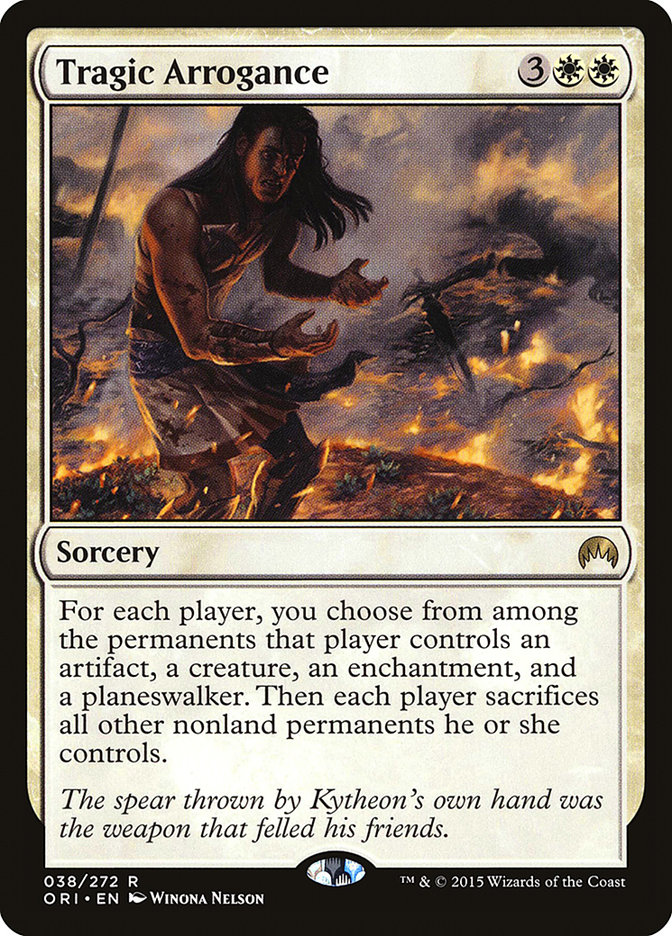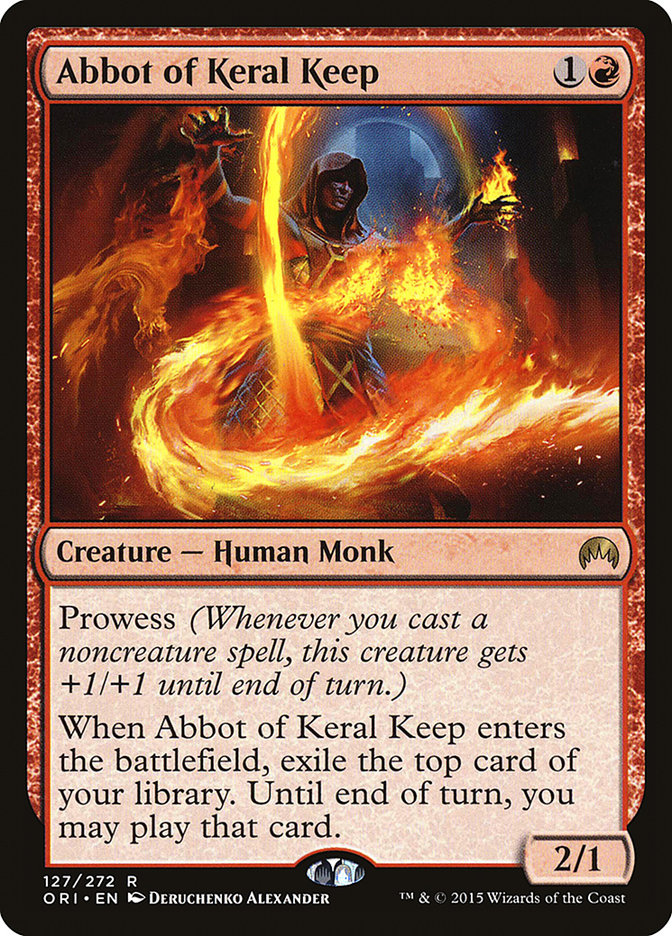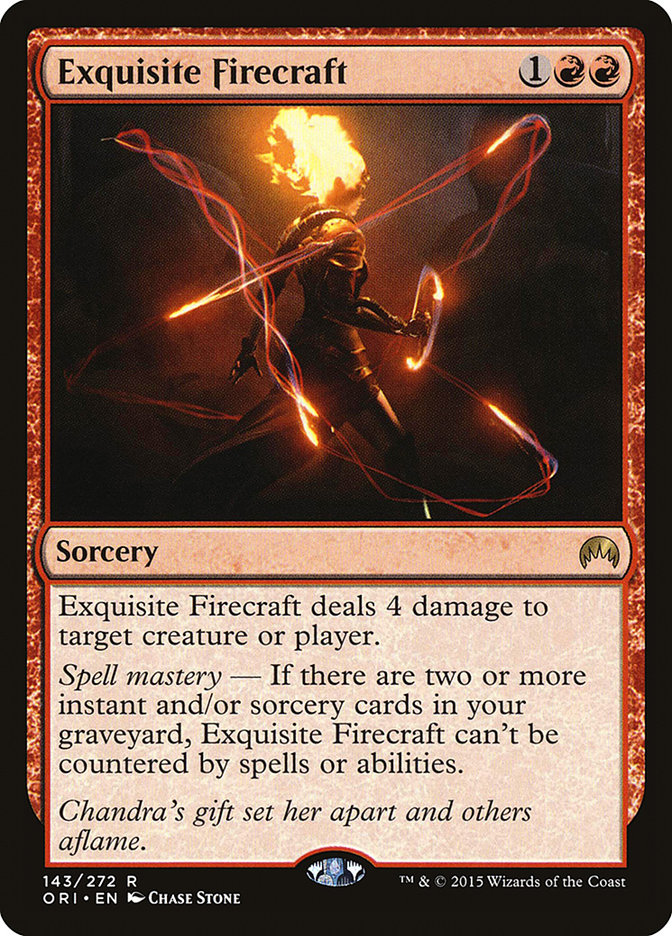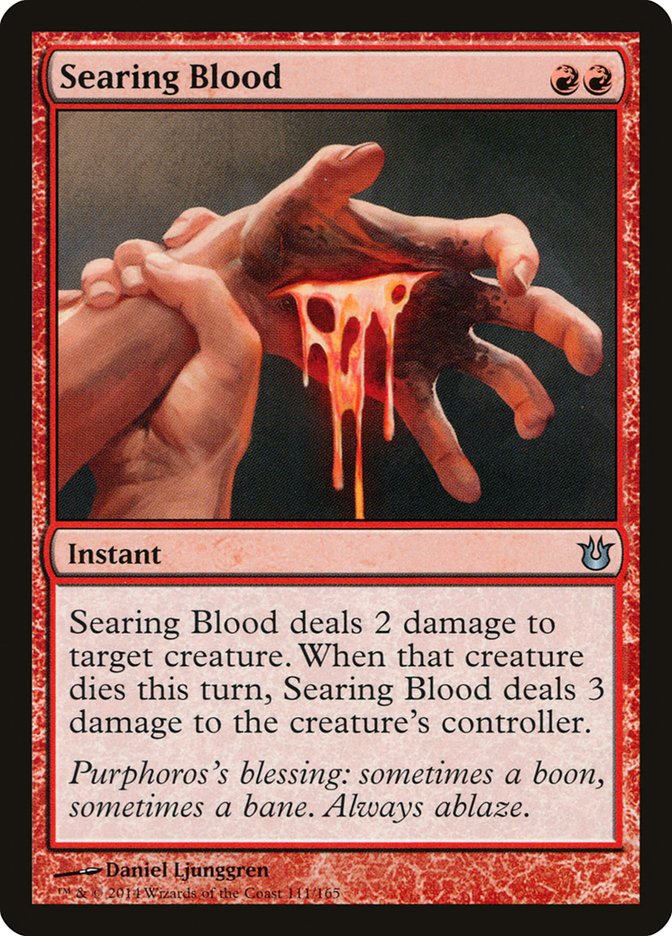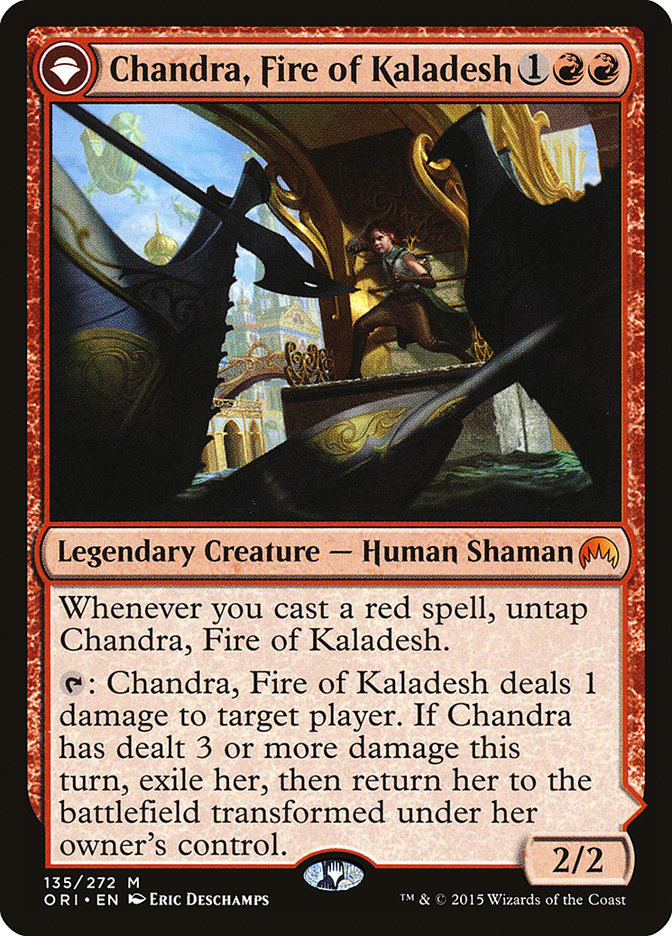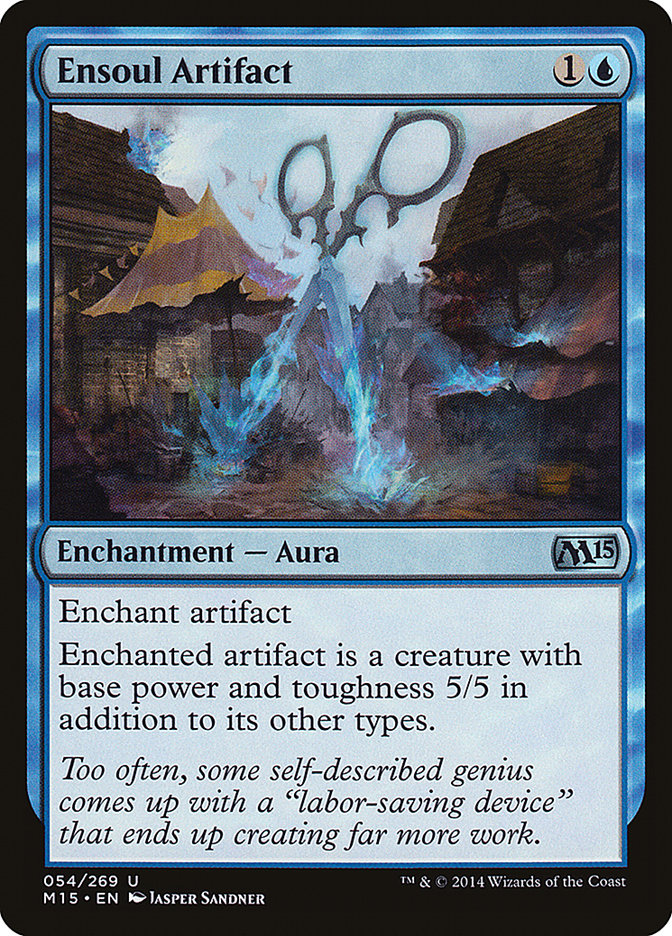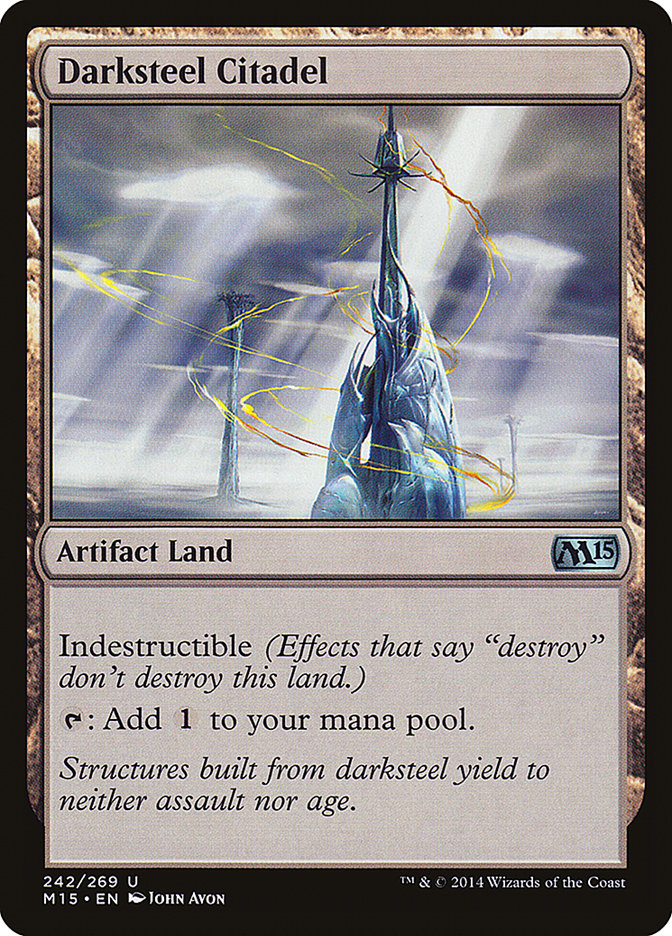After the Pro Tour, one of my favorite things to do is to reflect on the event and what
it means. Magic is an ever-changing game, and while it can move incredibly quickly, it is always important to make sure that you truly understand the
realities of what just happened. These days, the Pro Tour is a “first response” to a format in more ways than one: it isn’t just that it is one of the
first attempts at taking on the format by experts of the game, but it is also something that is done quickly. The time in between the release of
the full spoiler and the actual Pro Tour is remarkably short.
Magic Origins wasn’t like any other set that I can recall. As Team Ultra PRO delved into the set, it quickly became apparent that this set had the explicit
purpose of causing a shakeup of Standard. I honestly can’t recall the last time that a set was introduced where Standard felt so rocked without it also
involving a rotation. Maybe Apocalypse? That was back in 2001, and I say that without reservation.
This set’s spoilers started out underwhelming, and quickly became a tidal wave.
So, now that the wave has crashed, what is left above the high water mark? What is good?
The Two Top 8s
Going into this Pro Tour, the most obvious deck, in many ways, was Mono-Red Aggro, of a number of varieties. There was just an embarrassment of riches for
Red. When I looked at Red in Magic Origins, there were just so many new cards that were worthy of consideration, it was just fairly incredible. My Red Review slightly underestimated one of the huge new
players, Abbot of Keral Keep, which I thought of as “Good”, but was actually more correctly placed in the “Excellent” category.
The other huge game-changer has to be this card:
Just looking at this card, it was clear that it was awesome, and the only real question was what to do with it. Jeff Hoogland really started the ball
rolling on the controlling side of the table, but by the time the Pro Tour was over, we’d be thinking of it as a central part of the Rock-Paper-Ensoul
Artifact metagame, and for good reason: the deck was clearly a powerful part of the Pro Tour Magic Origins metagame.
So, when all is said and done, what were the good decks in this Pro Tour?
The official Top 8 decks were:
1st: Joel Larsson, Mono-Red Aggro
2nd: Mike Sigrist, U/R Thopters
3rd: Paul Jackson, G/R Devotion
4th: Matt Sperling, Abzan Control
5th: Kentaro Yamamoto, Abzan Megamorph
6th: Stephen Neal, Mono-Red Aggro
7th: Patrick Cox, Mono-Red Aggro
8th: Stephen Berrios, U/R Thopters
If we merge the two controlling Abzan decks, that makes four over-arching archetypes. Three Mono-Red Aggro decks is a telling amount, and there is a
reasonable story to be made out of saying that the combination of Abbot of Keral Keep and Exquisite Firecraft was a true game-changer. Joel Larsson’s win
with the deck also adds more to this narrative, but while he did actually win the whole event, Larsson’s excellent Standard-only Swiss performance of 8-2
was actually outperformed by a full eleven players!
Mixed-format events have long been the norm in Pro Tours, but it does muddy the waters in terms of trying to analyze what archetypes actually performed the
best. Was Mono-Red Aggro truly the best deck of the tournament, or was it something else? Unfortunately, there is no way to truly get to a pure answer on
this. The best we can do is work towards isolating the Constructed data as best as we can.
Swiss-style rounds are an effective way of helping to sort this information, but they also necessitate a pollution of our data. We start Pro Tours with
three rounds of Draft on each day, and after one round of Constructed, instead of having Constructed winners playing Constructed winners, we have a large
number of 0-1 players playing 1-0 players. This makes it much harder to evaluate, and always means the evaluation won’t be perfect, but we can try to do
what we can.
In order to unravel it all, I examined every player who was in contention for Top 8 in the Standard portion of the event – a total of eleven players, as
opposed to nineteen at Pro Tour Fate Reforged or a straight eight in Pro Tour Magic 15 – in other words, everyone with an 8-1-1 or better. From this group,
I examined every opponent that that player had in the Standard portion of the event, and tallied what those opponents’ records in Standard were.
The official minimum Opponent Match Win percentage for tournaments is 33%. I’ve long-felt that this wasn’t a sufficient way to avoid penalizing a player
who happened to have a single weak opponent for the day. In a Pro Tour, this would put the value of a weak opponent to ten match points (out of a potential
30). If we raise this to a 50% minimum, that would be 15 points; this flattens out the results a little, but I think that it is better to do that than add
in an incredible amount of variance. For most players in contention, this raised the scores from about three of their opponents.
Without any further ado, here are the “actual” Standard Top 8 competitors, as measured by their results in the Swiss:
8th Place:
Creatures (5)
Planeswalkers (2)
Lands (27)
Spells (26)

The top-finishing control deck with counterspells, Esper Dragons didn’t actually make a huge splash in the tournament at large, even though it finished in
the virtual Top 8. Esper Dragons has been heralded as the best control deck in the format for a while, and perhaps in this world of Ensoul Artifact and
Exquisite Firecraft, it is explicitly in the place you need to be, largely because of one card:
After all of the playtesting I did with control leading into this event, I’m pretty convinced that a great deal of Dolar’s success can be placed right here
with this card. Already it’s a part of a clearly powerful shell, but in a world of potentially indestructible 5/5 attackers and uncounterable four-damage
spells, gaining life and forcing creatures to be sacrificed is, as they say, “Big Game.”
The maindeck is nearly entirely free of Magic Origins cards – only a single Languish – but Jace, Vryn’s Prodigy looks to be an important card for this deck
moving forward.
7th Place
:
Creatures (11)
Planeswalkers (1)
Lands (25)
Spells (24)

Mantis Rider and friends can be a scary combination for opposing aggressive decks and more controlling decks alike. One of the incredible things about this
archetype is the way that it can so easily play a controlling game or an aggressive game and switch between them as the game progresses.
Unlike the previous deck, this one actually has a big handful of Magic Origins cards in the maindeck: 4 Jace, Vryn’s Prodigy and 2 Clash of Wills.
Both of these cards allow for a great potential second-turn or sixth-turn play. Clash of Wills isn’t in any way an efficient card, but it is a
bluntly effective one; just a few of this card can be effective in stopping the late-game bomb as well as simply being a card you can cast early if you are
lucky enough to get the chance.
As for Jace, this looks like a great home for the deck. With very few actual “pure” counterspells (three), there are a great many more targets for the -3
ability than there would be in a deck running many more counters, be it Esper Dragons or U/B Control.
6th Place:
Creatures (15)
Planeswalkers (4)
Lands (26)
Spells (15)

Matt and Patrick Chapin both dissented from the majority opinion of Team Ultra PRO to play Red; clearly it paid off for Sperling, who rode the wave of
simple aggregate card power and quiet synergies to a Top 8 Standard finish and the Top 8 of the Pro Tour.
The Magic Origins cards in this deck are likely to surprise no one; both are excellent controlling cards. Languish doesn’t kill all of the creatures a Crux
of Fate can, but the discount matters a lot, and the potential to keep alive a 4/5 after the fact is a big deal, especially if you believe there aren’t
likely to be many opposing 4/5s.
Nissa seems tailor-made for Abzan Control. The only real cost to Nissa is that it fits into that precious three-drop spot, which is already likely to be
glutted by competition in the form of a ton of all-stars like Courser of Kruphix, Den Protector, Hero’s Downfall, Abzan Charm, Deathmist Raptor, and
potentially even more specialized cards like Anafenza. With all of that competition, choices need to be made. In this deck’s case, it is leaning towards
the pure grind with Nissa, Vastwood Seer. Of course, there are other potential choices…
5th Place:
Creatures (20)
Planeswalkers (2)
Lands (24)
Spells (14)

Kentaro Yamamoto went the other direction, running a full Deathmist Raptor + Den Protector package, with even more three-drops in the sideboard: Anafenza,
the Foremost and Herald of Torment.
His build does include two copies of Languish in the maindeck, but other than that, this deck is absent of Magic Origins cards. Instead, he is set up to
try to exploit the megamorph package, and he is capable of a more aggressive style of grinding than a Nissa, Vastwood Seer is usually capable of. Those
extra three-drops in his sideboard also facilitate more aggression in those matchups where that is desirable.
Those first four players were all tied at 8-1-1. Now we move onto the 9-1s and better.
4th Place:
Creatures (25)
- 3 Elvish Mystic
- 1 Polukranos, World Eater
- 3 Stormbreath Dragon
- 1 Arbor Colossus
- 3 Boon Satyr
- 3 Courser of Kruphix
- 3 Rattleclaw Mystic
- 4 Savage Knuckleblade
- 4 Thunderbreak Regent
Lands (24)
Spells (11)

Try as you might, you’re not going to see a single Magic Origins card in here. However, there are two cards in the deck that seem completely aware of the
impact of Magic Origins on Standard:
It is usually far more likely to see an aggressive card instead of a Courser of Kruphix in a deck like Temur. Normally, we might just call this deck “Temur
Aggro” and be done with it, but several of the choices in this build, like that Courser, take a step towards slowing the game down in order to keep the
life total up. To my mind, it is hard to justify a card like maindeck Anger of the Gods in a deck with Mystics (Elvish and Rattleclaw) unless you are
willing to nombo yourself for the sake of the metagame.
This seemed like a great call in a world of Hangarback Walker and Exquisite Firecraft (and friends). Philip Arcuni’s deck isn’t pure in its approach to
game play; rather it positions itself with a potentially aggressive format in mind, even including Feed the Clan in the sideboard, in a deck notorious for being able to have Ferocious. This might be a great deck to bring to the table if you’re expecting a lot of red! The same can be
said of this next deck, as well.
3rd Place:
Creatures (28)
- 4 Elvish Mystic
- 4 Fleecemane Lion
- 3 Boon Satyr
- 2 Courser of Kruphix
- 2 Warden of the First Tree
- 2 Hidden Dragonslayer
- 4 Den Protector
- 4 Deathmist Raptor
- 3 Nissa, Vastwood Seer
Planeswalkers (2)
Lands (24)
Spells (6)

Here is a deck that looks like it doesn’t much care for an Abzan deck, but is totally comfortable fighting a ground game against another aggressive deck.
In a grind, this deck can board in a lot of sneaky tricks, most of which are from Magic Origins:
Nissa, Vastwood Seer is also present, and when you look at the combination of cards that this deck brings to the table, it’s quite intriguing how
aggressive a stance this essentially midrange deck can take. There are many non-aggressive card choices, but everything is so cheap, it is easy to imagine
Nissa, Vastwood Seer being a part of a start where the 2/2 body is actually getting in there for damage and immediately making a 4/4 once it flips over.
As with Arcuni, there are no other copies of Kibler’s deck in the Top 64. I’m certainly curious to see how both decks do moving forward, with more people
able to potentially pick them up and develop them.
2nd Place:
Creatures (19)
- 1 Firedrinker Satyr
- 4 Eidolon of the Great Revel
- 4 Monastery Swiftspear
- 1 Goblin Heelcutter
- 2 Lightning Berserker
- 3 Zurgo Bellstriker
- 4 Abbot of Keral Keep
Lands (20)
- 20 Mountain
Spells (21)

Another member of Team Ultra PRO representing in this Standard Top 8, if Rich’s build looks familiar, it should: teammate Pat Cox played another copy of
the deck in the actual Top 8 of the event, and they were nearly identical lists.
These two red spells were a critical part of what made this deck tick. In playing with and against this deck in the time leading up to the Pro Tour, I was
quickly impressed by just how fantastic Abbot was. It’s a subtle effect in so many ways, if only because the card from Abbot might not ever be usable.
However, it lets you get away with reducing your mana count in a deck that might otherwise truly want a little more land. In a world where many controlling
decks might be able to grind you down, access to an extra card can be a really big deal, so often leading to “just barely” wins. In addition, prowess was
such a potent part of the card simply for the ability to output more damage quickly; it was clear that a second-turn Abbot was a reasonable play a great
amount of the time just because a 2/1 prowess creature was good enough
Magic Origins also gave the deck this card, useful against the true control decks in the world as well as a potent card in the mirror, where more Eidolon
of the Great Revel would be welcome, but there are only four to be found. Perhaps, though, one of the biggest strengths of this deck was a recognition that
this was the world to maindeck four copies of this card:
I’m actually not sure if Justin Cohen or Sam Black had this revelation, but kudos to them for seeing it, and pushing this Mono-Red Aggro in a more
burn-heavy direction.
1st Place:
Creatures (20)
- 4 Eidolon of the Great Revel
- 4 Monastery Swiftspear
- 1 Goblin Heelcutter
- 2 Lightning Berserker
- 3 Zurgo Bellstriker
- 2 Chandra, Fire of Kaladesh
- 4 Abbot of Keral Keep
Lands (21)
- 21 Mountain
Spells (19)

Amazingly, Madison player Stephen Neal played nearly an identical copy of Mono-Red Aggro to the one played by Team Ultra PRO, but despite the geographic
nearness of Neal to other team members like me, Sam Black, Justin Cohen, Matt Severa, and Brian Kowal, this deck was completely independent of ours, and as
far as I know, there was no coordination between the two groups.
Most of what was said about the deck piloted by Rich Hoaen can be applied to Neal’s deck as well, but Neal has one card not played by Hoaen:
I think this is one of those incredibly under-appreciated cards that is going to get a lot more love in the next year, as players get to experience
first-hand what it means when your planeswalker actively contributes to your very narrow gameplan. Nissa, Vastwood Seer is a great card in subtly pushing
you towards being a good grinding deck; Chandra, Fire of Kaladesh is a great card at actively killing your opponent in a deck already dedicated to doing
that.
Stephen Neal’s finish, 9-0-1, is pretty remarkable; it’s uncommon to have an actually undefeated Constructed deck in a mixed-format event, and while
Stephen Neal did lose the Quarterfinals of the Top 8, I think it is worth noting that the first place deck from the Standard, the second place deck from
the Standard, and the Pro Tour Champion all were playing very similar Red Aggro decks.
Great job, Stephen Neal!
All the Archetypes
There were seven archetypes that were played by more than 5% of the field: Red Aggro (with pure Red Aggro, Atarka Red, and Goblins all wrapped together),
G/R Devotion, Abzan Control (including Abzan Megamorph), U/R Thopters, U/B Control, Sultai Control, and Abzan Rally.
After the fact, there is actually very little about this that surprises me. Our own group failed to find the Ensoul Artifact deck, but aside from that,
this looks about right, although I’m also surprised to see so much U/B Control and Sultai Control – in both cases, I just didn’t expect this to be as big a
part of the metagame as it was.
245 of 391 players (~63% of the field) made Day Two of the Pro Tour. Seeing the conversion to Day Two, along with the conversion to the Top 64 (~14% of the
field) and Top 32 (~7% of the field) can help give a picture of how each archetype performed.
Here is a visual representation of the metagame for Pro Tour Magic Origins:
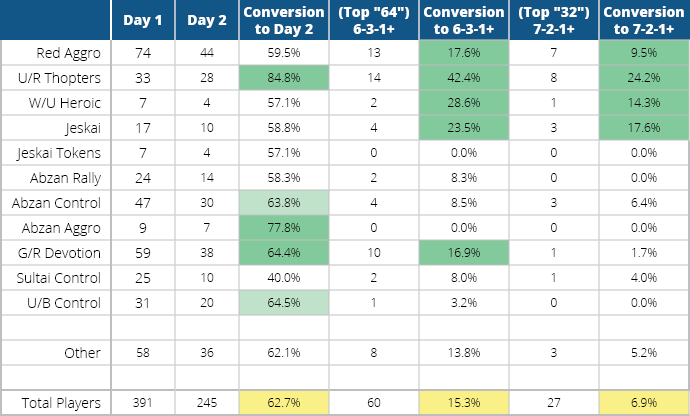
In yellow, you can see the typical performance of a Pro Tour competitor. In green, above that, you can see those decks which outperformed the expected
finish of a competitor in the event, with light green indicating less confidence in this metric (any performance that would drop below the line if a single
player’s performance were changed to a loss). If an archetype is doing worse than the yellow percentage, a typical player playing that deck would do better
to swap decks with a random competitor in the room (though, of course this doesn’t speak to a player having a remarkably better version of a deck that
everyone else playing the same archetype).
One of the first things that I notice in looking at this data is that nearly all of the decks in the tournament were above or near the 62.7% mark of a
random competitor. If you look at most of those archetypes, if they aren’t above this mark, they are only a single player away from getting above
that mark. One of the exceptions was Sultai Control, which, across the board, underperformed compared to the field.
The much more interesting case, though, is Red Aggro.
Here, the deck slightly underperformed in a typical player’s hand in getting into the second day. Yet, on the second day, it clearly performed incredibly
well, especially at the very top end of the field. I expect that this is from some combination of two reasons. First of all, while it is a stereotype that
many less-skilled players choose red decks, it is one that has some small truth to it, largely because it is perceived (I believe incorrectly) as an easy
deck to play; in this case, perhaps that is influencing the Day Two conversion. In addition, secondly, it seems likely that if players missed out on the
value of being a deck running both Abbot of Keral Keep and Exquisite Firecraft, they would simply perform less well than they ought to have if they had
discovered these cards. While this is merely conjecture, if I had access to all 391 lists, I expect that this might be borne out by the data.
Given how well basically all of the archetypes did, I expect that what we were looking at is a format that was well-explored enough for everyone
to be able to have a solid chance to have a reliable deck. Of the most-played decks only one really sticks out.
Apparently, this may have been the tournament to play rock, given how many U/R Thopters were running around and winning. This is borne out not only in the
Day Two conversion rates, but also in the rates at the top portion of the field.
At every level, U/R Thopters was the top-performing deck, sometimes remarkably so. The conversion to a Top 64 Standard finish (42%) is almost ludicrous for
a deck having so many players playing it (33). Compare this to one of the disappointments of the event, Abzan Rally, which only managed to put in two to
that level, or an even bigger disappointment, U/B Control, which despite a similar number of players (31) only manage one player in the Top 64 and none in the Top 32.
I think a huge part of what made U/R Thopters perform so well is that it wasn’t really a visibly pre-existing deck before this event, and thus, had very
few people directly considering it in their decks and sideboards. When you have an intensely powerful archetype that is underprepared for, that is an
incredible thing, and you can really see it in the performance of the deck. Remember, this deck had two copies in the Top 8, and had two players with
performances worthy of the Standard Top 8, only barely losing out on that mark by the narrowest of margins.
After U/R Thopters, the next big winner can be hard to determine. Red Aggro had the best conversion rate of all of the most popular decks, but it was
strongly outperformed by Jeskai and W/U Heroic. The problem with looking too hard at that is that both of those decks were running less than one-third of
the numbers that Red Aggro was, and that’s if you add the two decks together!
I think Jeskai gets the nod over Red Aggro and Heroic here, because its percentage is so much higher and it has a significant enough population in
the tournament that we can be more confident of the deck than we can of Heroic. Looking at any individual Jeskai list can be an exercise in complexity, as
the numbers are the most likely to be populated by a seemingly endless amount of three-ofs and two-ofs, but the overlap in the effect of the card choices
makes many of these judgment/metagame calls feel like choices for fifth and sixth copies of cards. This is one of those decks that lives or dies based on
where you aim your firepower.
If we only look at the top three played highly successful archetypes, U/R Thopters, Red Aggro, and G/R Devotion, we can see the differences
between all three. Isolated for those three, U/R Thopters stands so far above the other two it is shocking. What is also interesting, though, is just how
far Red Aggro stands above G/R Devotion. Compared to the field at large, they have similar numbers in making Top 64. The difference is that most of the Red
Aggro deck is positioned in the top portion of that Top 64 (a little place we call the Top 32), and most of the G/R Devotion deck is in the bottom
portion of the Top 64 (the second Top 32).
My expectation on this after a cursory glance at the top of the field is
that the G/R Devotion lists simply didn’t generally have enough weapons to fight the U/R Thopters decks that were everywhere at the top. Commonly, players
would have one or two answers to artifacts/enchantments, and that would be in their whole 75. In addition, most of these were not cards that could
handle this:
Conversely, the Red Aggro lists wouldn’t necessarily be in a position to be searching for answers; they might be able to simply race. With Searing
Blood as a part of that racing package, this could be a very reasonable Game 1 plan, indeed. The ability to interact reasonably with U/R Thopters seems to
me to entirely be what separated the performance of these two decks, with G/R Devotion clearly well behind, but perhaps having made up for some of that
difference by being able to be so antagonistic to Red Aggro itself.
At the very top of the field, other than these decks (U/R Thopters, Jeskai, Red Aggro, W/U Heroic, and G/R Devotion), everything else that was played by at
least 5% of the field really fell short. Abzan Aggro was the most dramatic of these, largely because nearly everyone (77.8%) who played Abzan Aggro made
Day Two, but none of them made the Top 64 of Standard alone.
The long and the short of it can be boiled up like this:
Good decks
U/R Thopters
Jeskai
Red Aggro
W/U Heroic
G/R Devotion
I would have put U/R Thopters in a category all by itself as “great”, but we really need to see what happens when it has been around for a while and people
are actively aiming at it more (much like Grand Prix San Diego).
Fine decks
Abzan Control
Abzan Rally
Here, we have two decks with some reasonable numbers here and there, but nothing outstanding. It is worth noting, here, that despite Matt Sperling Top 8
performance, it is actually Abzan Megamorph that performed better among the Abzan Control decks.
Marginal decks
Jeskai Tokens
Sultai Control
U/B Control
There might be a deck here for each of these, but they definitely need to be reconfigured if they want a hope to be viable.
Decks to watch
Esper Dragons
G/W Megamorph
G/W Constellation
For all of these decks, there were just far too few of them being played to really get a sense of how good these decks really are. Given only a little bit
of time in
the Magic Online hivemind
, I’m sure we’ll see.
Personally, I’m going to do what I always do: work on a ton of decks at once. Looking at my calendar, I don’t see any Standard events that I’m definitely
going to, but I do see that there is a little thing known as the Season Three Invitational in New Jersey in a few weeks, so maybe I’ll see you
there.
This weekend, I’ll be in Detroit for the Team Limited event, paired up with Craig Wescoe and Brian Kowal. Wish us luck!


